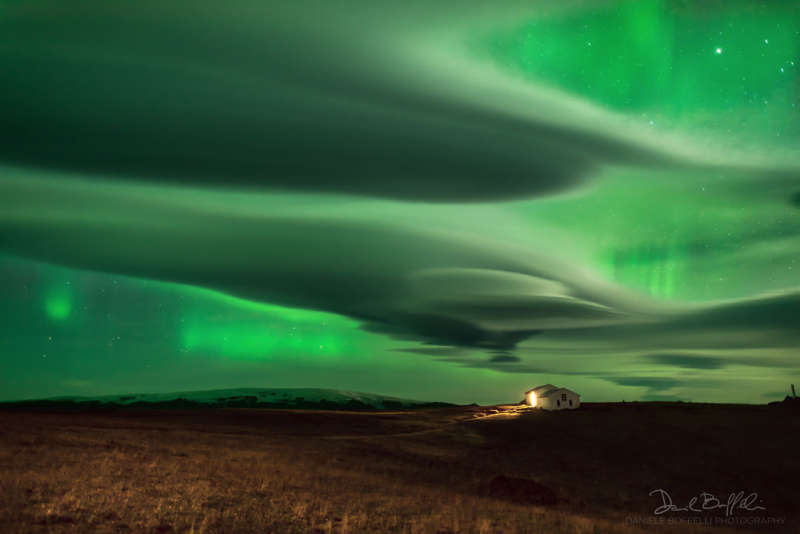
|
Credit & Copyright: Daniele Boffelli
Explanation:
Auroras usually occur high above the clouds.
The auroral glow is created
when fast-moving particles ejected from the Sun impact the
Earth's magnetosphere, from which charged particles spiral along the
Earth's magnetic field to strike atoms and molecules high in the
Earth's atmosphere.
An oxygen atom, for example,
will glow in the green light commonly emitted by an
aurora after being energized by such a collision.
The lowest part of an
aurora will typically occur at 100 kilometers up, while
most clouds usually exist only below about 10 kilometers.
The relative heights of clouds and
auroras are shown clearly in
the
featured picture from
Dyrholaey,
Iceland.
There, a determined astrophotographer withstood
high winds and initially overcast skies in an attempt to a capture aurora over
a
picturesque lighthouse, only to take, by chance,
the featured picture
along
the way.
Date the Universe:
APOD 2016 Wall Calendars
|
January February March April May June July August September October November December |
| |||||||||||||||||||||||||||||||||||||||||||||||||||||||
NASA Web Site Statements, Warnings, and Disclaimers
NASA Official: Jay Norris. Specific rights apply.
A service of: LHEA at NASA / GSFC
& Michigan Tech. U.
Based on Astronomy Picture
Of the Day
Publications with keywords: aurora - clouds
Publications with words: aurora - clouds
See also:
